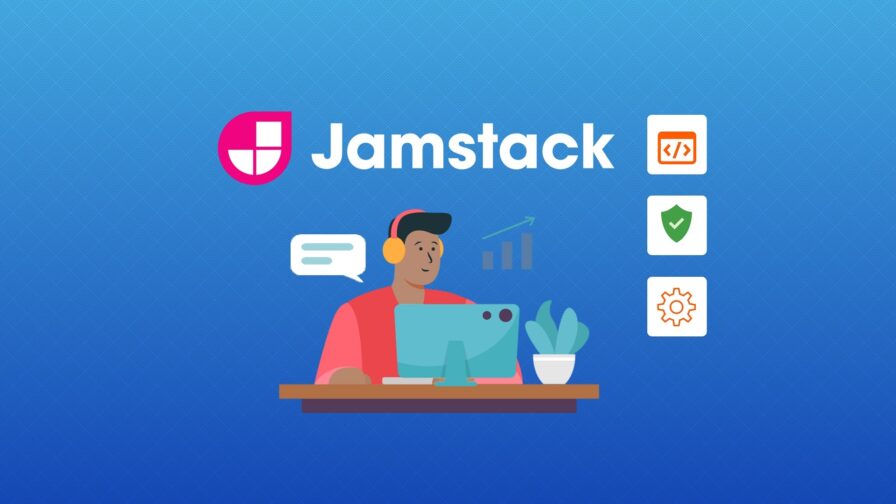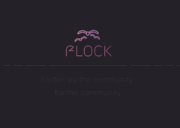
Jamstack, as with any new trend, brings a lot of myths and promises that do not always imply a revolution but a more straightforward way to do things. After the debate about Headless CMS and its benefits, Netifly has developed a solution for web developers that might be the new way to create clean and secure websites. But is it too good to be true?
What is Jamstack?
Jamstack is an approach to web architecture that involves using existing technologies and the fundamentals of web development, not creating something new.
Jamstack helps developers build faster, more secure, and easier to scale websites and apps. It provides the ability to use tools and workflows that increase productivity and improve the developer experience.
JAMStack involves compiling a dynamic website with static pages to speed up its rendering and improve the user experience.
This architecture simplifies the scalability of sites since the static pages generated can be hosted by a CDN and thus be delivered in a scalable and fast way all around the world. Furthermore, in terms of security, it offers fewer entry points for attackers and prevents DDoS attacks, for example. Finally, the cost of hosting is reduced compared to a standard web application since the cost of the servers is replaced by the sole price of the CDN.
JAM is the acronym for “JavaScript, APIs, Markup”, which corresponds to the three critical components of a site in JAMStack: static HTML pages (“Markup”), JavaScript code for the dynamic aspect, and APIs.
JavaScript
JavaScript is the most widespread programming language and forms the basis of the www. This language is used to create dynamic and interactive static web pages, a result that one does not necessarily obtain if one delivers simple HTML without JavaScript.
APIs
Creating dynamic JAMstack websites is possible thanks to APIs. APIs or Application Programming Interfaces are also required for making apps more practical, convenient, and accessible.
Markup
JAMstack uses markup as a means of submitting content to a website. Markup can be used as one of a number of ways to send data to the site; you can save text or images on a website, for example, and the markup will be responsible for sending the data.
Markup needs decoupling, which enables improved content adoption and pre-rendering of website elements for faster speeds.
To create a Jamstack site, you need to deploy three types of tools:
– A Headless CMS like Strapi is an open source solution, which will allow sales teams to edit and structure content. There are others like Ghost, Contentful or Magnolia which are in Saas.
– The API will make it possible to generate the front-end with templates like Gatsby. There are many frameworks, most of which are based on JavaScript technologies.
– Content distribution system as well as a chain of CICDs to deposit the site on one or more servers.
Are static sites reinventing the web?
Despite the hype, JAMstack is only leveraged on a tiny fraction of all websites. According to Web Almanac’s 2021 report, sites built by static sites builders (almost all believed to be built on the JAMstack philosophy) accounted for only around 1% of all websites. That said, JAMstack’s market share has doubled yearly for the past three years. Again, a vital sign of the growing interest in this technology: about a third of JAMstack developers are entirely new to the web development industry, with less than two years of experience.
JAMstack applications fulfill most of the five pillars of the AWS Well-Architected frameworks. These are fundamental concepts that AWS takes into account to provide a fast, safe, high-performance, robust and efficient infrastructure.
Develop affordable, fast, and secure web apps with JAMstack
Speed
For starters, the JAMtack dramatically increases page loading speed, which is good for the user. We also know that the loading speed and the cleanliness of the code have an impact on natural referencing since search engine robots take these criteria into account in the PageRank. It is therefore an approach that is of great interest to SEO experts.
The cost
More often than not, JAMstack sites are cheaper than their server-side counterparts. As a result, hosting static assets is affordable, and your page is now served at the same rate.
Scalability
Since you’re serving your files from static hosting, probably a CDN, this almost automatically gives you infinite scalability. Most providers claim this, which means you’ll have no problem letting in an influx of people to your site through the front door.
Security
Of interest beyond performance and speed of execution is security.
With JAMstack, the problem of servers no longer exists, which eliminates a number of security vulnerabilities in a company’s computer system.
Benefits and advantages of static sites
There are many advantages to using a JAMstack:
- Performance: No waiting for the end user to build the page; how to make it faster?
- Security: More database, more modules to manage this or that on your favourite CMS.
- Interactions are governed through APIs. In short, your site becomes a genuinely inviolable fortress.
- Easy development: You can completely separate the CMS part and development from the front. We will distinguish the content (your front) from the content manager (CMS).
- There are also more and more headless CMSs that will distribute their content on APIs (Even WordPress allows access to content via a REST API).
- Your CI/CD pipeline is made easy:
One of the basics of JAMstack frameworks is the use of a Git repository. This means many things, including versioning, simplified rollback, use of Git’s CI/CD pipelines, etc.
In short, it greatly facilitates life for the continuous integration of its site.
Jamstack limitations
The biggest problem with JAM is integrating dynamization. Take the example of e-commerce. You can ideally generate your product sheets in static without a problem. The difficulty will be when you want to change your prices. You will need to regenerate all or part of your static with each price movement. Depending on the type of CMS, deploying all the product sheets at each change can be a massive and time-consuming hassle. It is necessary either to have an effective way to regenerate only part of the static, something not necessarily provided for in JAM solutions or to redeploy the entire catalogue every hour, for example, at the risk of consuming time build for nothing.
JAMstack is relatively developer-friendly, but it can be trickier if you want to modify anything other than content on your own. Website owners cannot work with the structure of the site, as they do with standard CMS – they are unable to install plugins that modify the site’s appearance. Any changes involve coding, which means additional development work.
The use of JAMstack technology may result in over-reliance on third-party services. The project can depend on external services and APIs; if the system fails, there’s not much to do, as it’s a tool vendor issue.
And the expense is another consideration. JAMstack involves paying for highly skilled developers, whether hired internally or outsourced.
If you are a small enterprise with limited coding skills, a simple solution such as WordPress may be more suitable.
Recap and extra resources
What JAMstack does:
Easy delivery of a digital product thanks to a limited amount of dynamic elements.
Have an application that will allow rapid scaling
Have a more secure website
Provide a fast website as it contains mostly static files
Save money on server hosting
A solution that has it all
Current technology trends put pressure on continuous development, constantly improving performance and finding new versatile services. JAMstack is an excellent example of a solution that has it all. It has also assembled a community continually collating new data and tools to expand the possibilities of these frameworks.
We’ve put together some resources to get you started on the architecture that is undoubtedly changing the world of web development.




